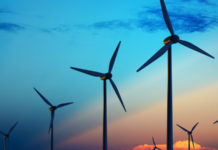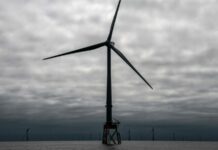
[miningmx] — ESKOM is once again in the firing line because of its proposal for five
electricity tariff increases of 16% per year until 2018.
That will increase Eskom’s average tariff from 61c per kilowatt-hour (kWh) to 128c
per kWh.
“It’s not affordable – it will shrink industry and commerce. It will cost us jobs.’ These
words will probably be heard from many commentators in the months ahead; in this
case, they come from Mike Rossouw, a spokesman for the influential Energy Intensive
User Group and an executive director of Xstrata Alloys, the division of Xstrata in
South Africa that smelts chrome and is also active in platinum.
Rossouw has warned repeatedly that electricity tariffs are dangerously close to the
point where it would become unaffordable for industrial users. The latest proposal by
Eskom sees the prices for bulk consumers (industries) rising sharper than for
residential consumers and proposes subsidies for poorer consumers.
According to Eskom’s proposal, in the first year of the cycle (2013) municipal tariffs
must increase by 13% to 64.9c per kWh, and by 21% to 69c per kWh for industrial
and commercial consumers.
Bear in mind that municipalities add their distribution costs to this tariff, but this has
actually just become a way to charge municipal consumers more.
In addition, large consumers are charged levies in order to subsidise domestic
consumers, especially consumers in rural areas, as well as to finance public lighting.
There is a whole series of levies on large consumers. They are small in terms of the
tariff charged, like 6c per kWh for night-time industrial use in a total tariff of 63c,
but because they purchase such large amounts of electricity, it is an enormous
amount in the end – and a huge burden on the cost of doing business in South
Africa.
Rossouw’s point is that these charges and subsidies have reached a point where
they are unsustainable.
Small businessmen, whose voice is seldom heard concerning this issue, will probably
be hit the hardest.
“The poor in South Africa do not need cheaper electricity. They need jobs,’ Rossouw
says. “Therefore we must protect the primary sectors of the economy, but the
proposed tariffs are anything but friendly toward those sectors.’
The increases of 16% include 3% to be used to subsidise the buying of electricity
from renewable energy sources. Eskom also makes provision for its operating
expenses increasing by 8% per year, though it only provides for an increase of 1%
per year for its staff.
“Inefficiency in the production and use of electricity must be sorted out. Eskom is
under pressure. We are making decisions now on the basis of inefficiencies that
should first have been eliminated,’ Rossouw said.
One of the most disturbing aspects of Eskom’s application is that its calculations are
based on it completing Kusile, the second coal-fired power station in its building
programme, without any additional power stations.
However, the integrated resource plan that was adopted in 2010 on the basis of the
country’s future energy needs provided that additional generating capacity of 29,000
MW must be provided by 2030.
A total of 9,600 MW of this must come from nuclear power stations, the first of
which was supposed to come into operation in 2022 – implying it had to be approved
last year since it takes 10 years to build one.
Eskom has postponed its application to the National Energy Regulator (Nersa) to
calculate what its tariff increases should be if it is to provide future energy needs.
Based on this, tariff increases should be 20% per year over the next five years.
Some analysts had hoped Eskom would also announce what its next building projects
would be and that this would be submitted with its Nersa application. If that had
been done, the tariff increases would have been 20% per year over the five years
after March 2013. That this was not done means that the building programme for
electricity infrastructure is again falling behind.
Another huge problem for which no provision has been made yet is Eskom’s coal
requirements.
It has already bought 80% of the coal it will need until the end of 2018, but only
10% of what will be required after that, because the coal reserves in Mpumalanga,
where most of its coal-fired power stations are situated, will be exhausted by 2018.
– Sake24











